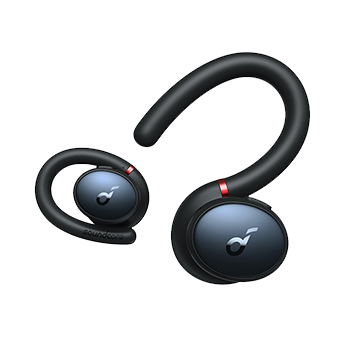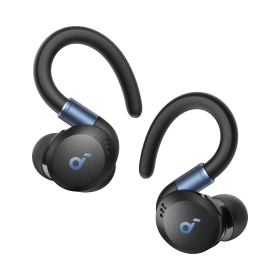Fixed vs Head Tracked Spatial Audio: Which is Right for You?
Spatial audio, once primarily a domain of sophisticated speaker systems, has remarkably transitioned into the realm of personal audio devices. Nowadays, it's not just high-end headphones that boast this feature; even advanced earphones are equipped to deliver a spatial audio experience.
At the heart of this audio revolution are two distinct types: "fixed spatial audio" and "head tracked spatial audio." Each brings its own flavor to the immersive 3D soundscapes. This guide delves into the depths of fixed vs head tracked spatial audio, unraveling their unique characteristics, exploring their differences, and helping you determine which might be the best fit for your needs. Let's dive in!

What Is Head Tracked Spatial Audio?
Head tracked spatial audio is a cutting-edge audio technology that enhances a 360° listening experience by incorporating the head movements of the listener into the audio output. It's designed to create a more immersive and realistic sound experience, closely mimicking how we perceive sound in the real world.
Here's how it works:
- Motion Tracking: Head tracking spatial audio systems use sensors to track the movements of the listener's head. These sensors can be incorporated into headphones or earphones, or they can be external devices that communicate with the audio output system.
- Dynamic Sound Adjustment: Based on the data received from the head tracking sensors, the audio output is dynamically adjusted in real-time. This means that if you turn your head to the right, the audio will adjust so that sounds originally in your front, like a barking dog, will now be heard more in your left ear, just as they would be in a real-world scenario.
- Enhanced Immersion: This dynamic adjustment of audio significantly enhances the immersion of the listening experience. It is particularly effective in virtual reality (VR) environments, gaming, and certain cinematic experiences, where the alignment of audio with visual and physical cues is crucial for creating a believable and immersive experience.
What Is Fixed Spatial Audio?
Fixed spatial audio, often considered the traditional form of spatial audio, is a type of sound reproduction that creates a multi-dimensional sound field, but it remains constant regardless of the listener's head movements. Here are some key aspects of fixed spatial audio:
- Static Sound Field: In fixed spatial audio, the sound field is set up in a specific way and does not change based on the listener's movements. This means if a sound is designed to come from a certain direction, it will continue to come from that direction. So, if you're watching a scene where there's a dog barking to your left, the barking sound will remain on your left side regardless of how you move or turn your head.
- Multidimensional Sound Placement: Despite being static, fixed spatial audio can still place sounds in a 3D space. This is achieved through techniques like binaural recording or through audio processing algorithms that simulate how sound behaves in a three-dimensional environment.
- Immersive Experience: Fixed spatial audio still offers a more immersive experience compared to traditional stereo sound. It can make listeners feel like they are in the middle of the action, whether that's in a movie, a game, or listening to a music track. The sense of space and directionality it provides is more advanced than what stereo sound can offer.

Difference Between Fixed and Head Tracked Spatial Audio
The primary difference between fixed and head tracked spatial audio lies in how they interact with the listener's movements and their approach to creating an immersive audio experience. Below is a table to provide a clearer, side-by-side comparison of the two technologies:
|
Aspect |
Fixed Spatial Audio |
Head Tracked Spatial Audio |
|
Sound Origin |
Sound remains consistent in its spatial origin, regardless of listener's movement |
Sound direction changes based on the listener's head position |
|
Movement Responsiveness |
Non-responsive to listener's head movement; sound direction stays the same |
Responsive to head movement; audio adjusts to mimic real-world sound orientation |
|
Technological Complexity |
Less complex; primarily based on a static multi-speaker setup and algorithms |
More complex; involves tracking technology to monitor head position |
|
Applications |
Movies, TV shows, video games, music – especially in a controlled environment |
VR, AR, gaming, and applications where user movement is integral |
|
User Experience |
Provides a rich, immersive sound experience with consistent audio direction |
Creates a highly dynamic and realistic auditory experience by adapting to user's movements |
Which Spatial Audio Should You Use?
Choosing between spatial audio fixed vs head tracked depends on your specific needs, preferences, and the context in which you'll be using it. Here are some considerations to help determine which spatial audio is best suited for you:
Fixed Spatial Audio Is Ideal for:
- General Home Entertainment: If you primarily consume traditional media in a home theater setting, like watching movies or listening to music, fixed spatial audio can offer a rich and immersive experience without the need for head movement tracking.
- Consistent Audio Field: For applications where maintaining a consistent sound field is important, such as in certain gaming environments or when using traditional stereo systems, fixed spatial audio is a good choice.
- Simplicity and Compatibility: Fixed spatial audio is easier to set up and more compatible with a wide range of audio equipment and media formats. You can enjoy it using a pair of soundstage headphones, which are quite common.
Head Tracked Spatial Audio Is Best for:
- Virtual and Augmented Reality: In VR and AR experiences, where your head movements are integral to the experience, head tracked spatial audio significantly enhances immersion and realism.
- Interactive Gaming: For advanced gaming setups, head tracked spatial audio provides a more dynamic and engaging experience. For example, you can realistically pinpoint the locations of opponents or sounds, even if you momentarily look away, adding a strategic depth to your gaming experience.
- More Immersive Experiences: If you're seeking the most immersive audio experience possible, especially for content that benefits from dynamic audio perspectives, head tracked spatial audio is the way to go. For instance, if your music app supports it, you'll hear the band or musicians playing from different directions. With your eyes closed, moving your head changes these directions in a realistic manner, adding incredible depth to the music.
- Advanced Equipment: Head tracked spatial audio requires specific hardware, such as VR headsets or advanced headphones with tracking sensors. soundcore has harnessed this technology in the state-of-the-art spatial audio earbuds, ensuring you get the most immersive audio experience.
The soundcore Liberty 4 pro earbuds are a game-changer in spatial audio. They support spatial audio with dynamic head tracking, ensuring an immersive 360° audio experience. The Adaptive Active Noise Cancellation (ANC) system adjusts in real-time to your environment, ensuring uninterrupted listening. The sleek charging case includes a touch bar and display for easy control of noise-canceling levels. With up to 10 hours of playtime on a single charge and a total of 40 hours with the charging case, they are perfect for extended use.
On the other hand, the soundcore AeroFit Pro earbuds prioritize comfort with their air-like, open-ear design and ultra-soft materials. They boast a secure fit with flexible ear hooks and an optional neckband for additional stability. The AeroFit Pro's 16.2mm oversized drivers provide robust bass, while the integration of true spatial audio and LDAC technology, along with dynamic head tracking, offers an exceptionally immersive listening experience. Additionally, these earbuds are IPX5 water-resistant, making them suitable for active users and outdoor environments.

When deciding on fixed vs head tracking spatial audio, think about your typical use cases. If your activities are generally stationary, fixed spatial audio could be sufficient, offering wide compatibility and ease of access. If you want an audio experience that changes with your movements and you're open to investing in advanced headphones, then head tracked spatial audio is for you.
FAQ
Now, let's address some common questions you might have about fixed vs head tracked spatial audio:
Does head tracking spatial audio use more battery?
Indeed, head tracking spatial audio tends to consume more battery. This increased usage is because the technology continuously utilizes sensors and advanced processing to track the user's head movements. These functions require additional power, leading to faster battery drainage compared to standard audio playback.
Does spatial audio move with your head?
Spatial audio can move with your head if it's head tracked spatial audio. This type of audio adjusts dynamically based on your head movements, creating an immersive and realistic listening experience. However, if it's fixed spatial audio, the sound does not change with head movements and remains static in its original direction.
Conclusion
As we have journeyed through the nuances of fixed vs head tracked spatial audio, it has become evident that both types of spatial audio technologies have their unique strengths and applications. Fixed spatial audio offers a consistent and immersive experience, ideal for stationary activities, while head tracked spatial audio provides a dynamic and interactive auditory journey, perfect for users engaging in motion-centric activities. The choice between fixed or head tracked spatial audio hinges on your specific listening needs and preferences. Whichever you choose, the world of spatial audio promises an exciting and immersive audio journey.





























































